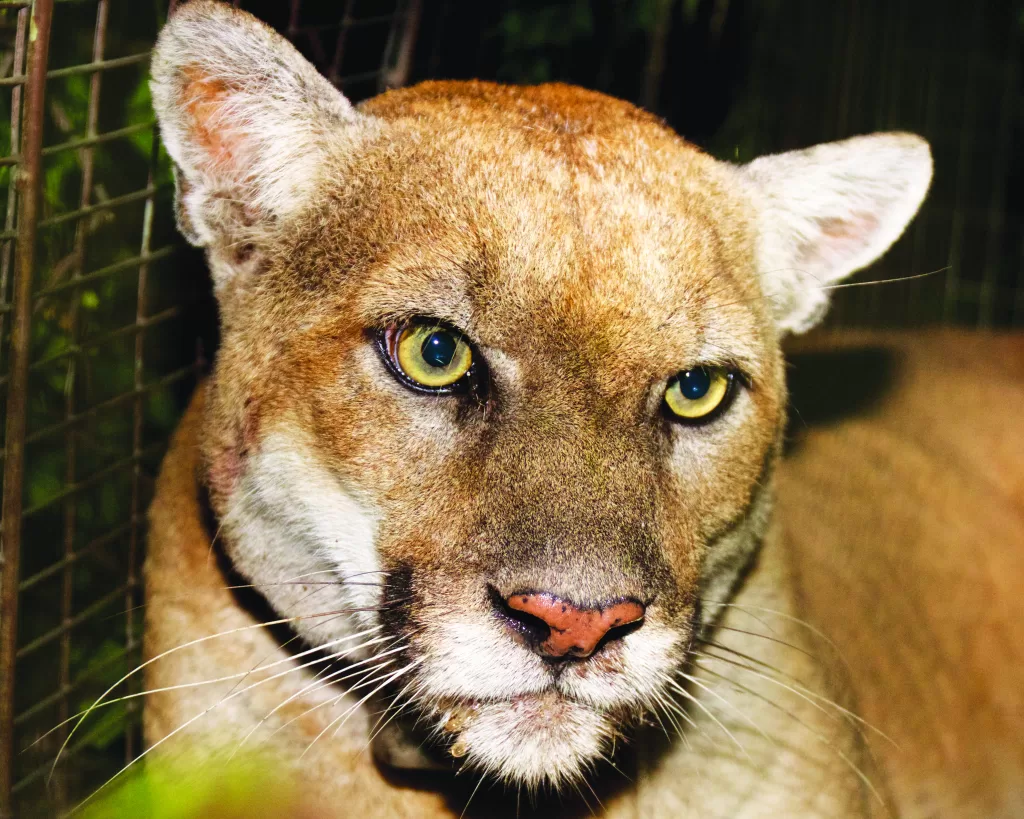
The California Department of Fish and Wildlife (CDFW) and National Park Service (NPS) reviewed the final postmortem examination and lab tests from P-22, the mountain lion from Griffith Park. The results confirmed P-22 had been suffering from multiple severe injuries and chronic conditions that impaired his ability to function in the wild and would have lowered his quality of life if placed in human care.
P-22 was captured and anesthetized by CDFW and NPS on December 12, 2022, after scientists noted a recent change in his behavior. He was transported to the Los Angeles Zoo for initial examination and treatment, then transferred to the San Diego Zoo Safari Park for follow-up evaluation, including a computed tomography (CT) scan, where it was discovered that he had serious injuries and health problems. He was euthanized under general anesthesia on December 17, 2022. The postmortem examination was completed by veterinary pathologists at the San Diego Zoo.
“We are grateful to the San Diego Zoo Safari Park and Los Angeles Zoo teams,” said Deana Clifford, a senior wildlife veterinarian for CDFW. “They provided excellent care for P-22 and conducted a detailed postmortem examination that shed plenty of light on this cat’s condition.”
Some findings demonstrated that P-22 had recent trauma to his head and right eye, including an orbital fracture with bleeding and early stages of scar tissue development. This is consistent with reports of a vehicle strike the night before he was captured. P-22 also had injuries consistent with older, significant trauma, including a diaphragmatic rupture, through which the liver and sections of connective tissue from the abdomen had herniated and were inside his chest cavity.
The examination also confirmed that he was underweight, arthritic and had progressive and incurable kidney disease, as determined before his death. He also had a severe parasitic skin infection over his entire body, caused by demodectic mange and a fungus, specifically ringworm. Toxicology testing on his liver revealed exposure to five anticoagulant rodenticides (AR) compounds. However, he had no evidence of AR poisoning (i.e., unexplained bleeding, injury, illness or death due to exposure to the toxicants).
P-22 was likely born in the Santa Monica Mountains as the son of adult male P-1. NPS biologists first captured and radio-collared P-22 in March 2012 when he was estimated to be two years old. He was one of the most senior mountain lions in a study the NPS has conducted since 2002.
“P-22 was a fascinating animal to study,” said Jeff Sikich, the lead field biologist of the NPS mountain lion study. “Not only was he an important ambassador for urban wildlife, but his scientific contributions were also many. He helped us understand how mountain lions coexist with humans in this complex urban landscape, and his legacy will live on through our heightened awareness of how to live in harmony with wild neighbors and growing public support for wildlife crossings.”




